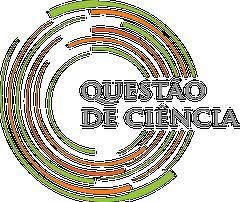
3 minute read
The Enterprise meets God, and is God crazy or is God a child?
Meeting God
McIntyre’s book, on the other hand, spends three pages describing the process and scrupulously avoids suggesting any kind of essential difference between living and inert matter. However, the canon is defined by what appears on the screen. So, we are trapped in a vitalistic (fictional) Universe.
Advertisement
This is not, of course, the only point where Star Trek’s reality diverges from ours, incorporating, as established facts, concepts that, in our Universe, are pseudo-scientific.
After my mild shock with The Wrath of Khan, I was also reminded that Star Trek’s reality is dualistic — that is, there is a fundamental distinction between body and mind. Personality is not a product of the brain, but something that can exist outside it: this is how Vulcans manage to transfer and preserve their “katras”, defined, in the film The Search for Spock, as “the true essence, everything that it is not of the body”.
And, of course, the franchise has always zealously embraced the theme of astronaut gods. They appear explicitly in the original series’ second season episode “Who Mourns for Adonais?”, in the animated series episode “How Sharper Than a Serpent’s Tooth” and permeate all seasons of all products in the franchise, marked by the recurring appearance of forces omnipotent or transcendental aliens who end up being confused with (or compared to) deities.
There is even a sly quote, attributed to science fiction writer Harlan Ellison, saying that the creator of Star Trek, Gene Roddenberry, actually “had only one idea in his life”: “The Enterprise meets God, and is God crazy or is God a child”.
The greatest instance of silliness
This particular theme has become so deeply integrated into the series’ canon that it has become the authoritative explanation for why most intelligent alien species encountered on the Enterprise’s travels look like earthlings wearing makeup: humanoid DNA was seeded across the galaxy billions of years ago by a mysterious alien species.
This astonishing fact is presented in an episode of the sixth season of the series The Next Generation, “The Chase”, and in scientific terms, it is one of the greatest instances of silliness ever seen in the series.
Are
Basically, it assumes a kind of biological essentialism tied to the DNA molecule and a kind of directed evolution that has more in common with biblical creationism than with science and evolution.
In general, the Star Trek writers seem to have been concerned (at least a little) with giving some veneer of scientific respectability to their fictional use of physics (folding space, black holes, wormholes, time travel, etc.), but left fantasy runs wild when the subject is biology and evolution.
Again, there’s nothing essentially wrong with that: science fiction is not scientific diffusion. But I know some evolutionary biologists who got frustrated – felt a bit betrayed –after watching “The Chase”.
This episode in particular is not limited to playing or extrapolating on top of scientific concepts (in this case, evolution and genetic inheritance), but throws everything out the window and reinforces misconceptions that are very present in common sense, such as that intelligent life is the “goal” of evolution.
Pseudoscience and science fiction
Of course, none of this is exclusive of Star Trek. The relationship between science fiction and pseudoscience is old and complex. So old and complex, in fact, that there’s even a great book on the subject, Pseudoscience and Science Fiction by Andrew May, published by academic publisher Springer.
Science fiction as we know it today, in literature, comics and cinema, still draws heavily from the traditions and vocabularies established in magazines published in the first half of the last century in the United States. Editors who helped shape the genre, such as Ray Palmer (of “Amazing Stories”) and John W. Campbell (“Astounding Science Fiction”), were also enthusiastic promoters of pseudoscience (ufology in Palmer’s case, dianetics in Campbell’s).
Both forms dialogue with the public perception of science – what non-experts think science is. The difference is that science fiction presents itself as fiction, while pseudoscience is dishonest, an imposter. But, in this dialogue, they also end up talking to each other a lot and exchanging themes and ideas.

Much pseudoscience only seems convincing because it is made up of ingredients that science fiction has “normalized” in the public consciousness.
None of this, of course, reduces the charm of fiction (as fiction) or makes me like Star Trek any less. By the way, I’m waiting for a free night to rewatch the fifth film in the cinematic series – the one where Captain Kirk meets God.










